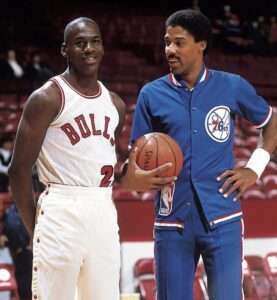Each summer, Hollywood Forever Cemetery abandons stillness for spectacle. Mausoleums flicker with light. Gravestones become backrests. And beneath the palms, thousands gather not to mourn, but to celebrate cinema in its most mythic form: projected, resurrected, and relived in a graveyard of legends.
Cinespia’s June 2025 series is a curated séance: Showgirls for Pride, Once Upon a Time in Hollywood for cinephiles, and Casablanca for lovers and nostalgics. What ties them together isn’t genre or era, but resurrection—each screening a cinematic revival shaped by the place, the crowd, and the cultural moment. The cemetery becomes more than a venue; it’s an altar where viewers commune with ghosts, icons, and fantasies that never fully died.
Pride in the Grass: Showgirls as Camp Resurrection
Thirty years after being laughed out of theaters, Showgirls returns triumphant. It screens during Pride month with drag performances, pole-dancing photo ops, and a tagline that dares you not to look away: “heel-clicking, pole-licking, mother-strutting glitz fit.”
Paul Verhoeven’s 1995 catastrophe-turned-cult-hit was once Hollywood’s most infamous flop. Now, it’s a Pride month staple. Why? Because its flaws—glaring, extravagant, unapologetic—make it perfect. Nomi Malone’s climb through the seedy neon jungle of Vegas isn’t just a failed satire; it’s a fable of self-invention.
Camp as Canon
Like The Rocky Horror Picture Show, Showgirls thrives not in silence but in noise: hoots, cheers, quotes shouted in sync. The cemetery’s wide lawn becomes a temple of camp, where irony becomes ritual and bad taste becomes sacred. Susan Sontag once called camp a “love of the unnatural”—Cinespia’s screening shows how that love becomes collective liturgy.
Pride as Recontextualization
By programming Showgirls alongside D.E.B.S., a sapphic spy spoof, Cinespia underscores how queer audiences don’t just tolerate failed films—they transform them. It’s not about rescuing Showgirls from badness, but celebrating that badness as defiance. The cemetery becomes a stage for joyful reclamation, where cinematic wreckage is dusted off and drag-queened into queer canon.
Tarantino’s Once Upon a Time: Nostalgia with a Flamethrower
Where Showgirls celebrates gaudy ruin, Once Upon a Time in Hollywood mourns a lost paradise and imagines it differently. Tarantino’s 2019 film, projected among actual Hollywood dead, feels less like fiction and more like necromancy.
Hollywood’s Ghosts
The film’s characters—Rick Dalton, Sharon Tate, Cliff Booth—wander a 1969 L.A. that no longer exists. Except in Cinespia’s setting, it kind of does. Musso & Frank Grill is still open. The Cinerama Dome glows again. And Sharon Tate is buried just a few yards from where her character dances, immortal, onscreen.
Tarantino rewrites Tate’s fate with one of cinema’s most notorious “what ifs.” Rather than being murdered by the Manson Family, she’s saved—her innocence preserved, her future unwritten. The cemetery, filled with stars who never got a rewrite, gives the scene added weight. Watching it here turns fantasy into wishful history.
Audience Alienation as Art
Once Upon a Time isn’t built for passive consumption. It meanders. It references fake shows (Bounty Law), fake brands (Red Apple Cigarettes), and real grief. As critic Andriiana Ilkiv noted, it’s “tedious on purpose.” That tedium alienates casual viewers, much like Cinespia itself: the long lines, the niche picks, the cinephilic in-jokes. You’re either in on the vibe—or you’re not.
But those who are in get something rare: cinema that isn’t just content, but context. Watching this film among tombstones and headliners isn’t just aesthetic; it’s intertextual. It’s Hollywood talking to itself.
Casablanca: Love, War, and Immortality
Closing out June, Cinespia returns to the most eternal myth of all: doomed romance in the face of fascism. Casablanca, projected for a modern audience on a summer night in 2025, isn’t just old Hollywood; it’s old wisdom.
Timelessness in a Cemetery
The film’s central tension—romance vs. resistance—feels newly urgent in an election year. Rick’s bitter idealism, Ilsa’s sacrifice, the anthem rising in the background—it’s not just melodrama. It’s a masterclass in messaging. In 1942, it was wartime morale. In 2025, it’s a reminder of the stakes.
Watching Casablanca in a cemetery reframes its ending. Rick and Ilsa’s goodbye feels less like loss and more like preservation. They don’t die, but they surrender to myth. Hollywood Forever, with its palm-shaded tombs and peacocks strutting through the mausoleums, is built on this very idea: lives don’t end; they echo.
Material Nostalgia
There’s a spatial resonance too. Once Upon a Time in Hollywood nods to the Cinerama Dome and Musso & Frank Grill. Those same landmarks tied to Rick Dalton are the real-world neighbors of Casablanca’s mythos. What Tarantino does with homage, Cinespia does with programming—layering time periods and tones until the past feels touchable.
The Cinespia Experience: Rituals Beyond the Screen
To understand why thousands sprawl on grass every weekend with blankets and wine, you have to look past the films. Cinespia isn’t just a screening. It’s a cultural ritual.
The gates open early. People bring picnics that look like magazine spreads. There are DJ sets that lean retro but slyly modern—disco, soul, electro-funk. Photo booths offer themed backdrops (Clueless high school lockers, Heathers croquet lawns, Drive’s elevator of doom).
In May, The Big Lebowski turned the cemetery into a bowling alley complete with White Russians and Dude-costumed fans. That set the tone for June: irony, immersion, indulgence.
But the most sacred part of Cinespia is the shared moment when the projector flickers on and everyone quiets down. The palm trees sway. The city hums just beyond the cemetery walls. And the screen becomes a time machine, church window, and mirror all at once.
Flow
Cinespia’s June 2025 screenings aren’t just retro fun. They’re cinematic séances. Films once discarded (Showgirls), once fantasized (Once Upon a Time), and once canonized (Casablanca) are revived not in isolation, but in communion.
This lineup is a thesis on what it means to watch a movie in 2025:
- To laugh at what was once mocked (Showgirls) is to reclaim power.
- To rewrite what was once tragedy (Once Upon a Time) is to resist fatalism.
- To return to what was once truth (Casablanca) is to remember why stories matter.
At Hollywood Forever, these films aren’t inert. They’re undead. They breathe, shimmer, and haunt in ways multiplexes can’t replicate. Under the stars, among the dead, movies live again—not just as entertainment, but as collective memory.
No comments yet.







